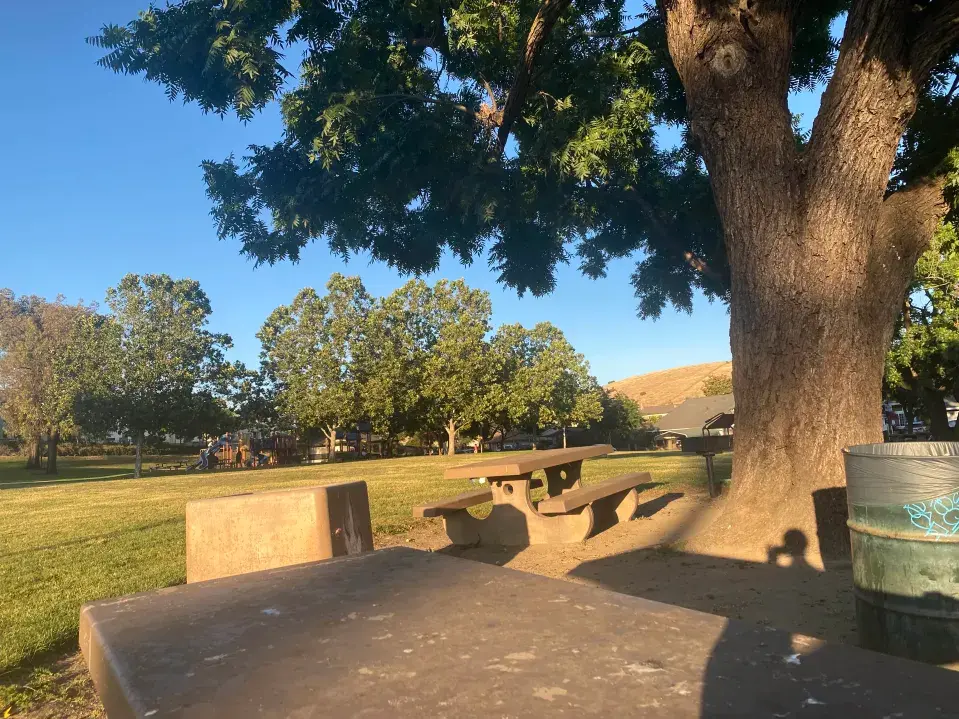Parks for People, Pretty Animals, and Poisonous Plants
- Emily Chang
- 8 hours ago
- 4 min read
Lately, I have been struggling to deal with a rash that I likely obtained coming across a poisonous species no human should come into contact with during either a Keep Coyote Creek Beautiful BioBlitz or a creek clean-up. The likely culprit: Poison oak (Toxicodendron diversilobum). Out of all the Keep Coyote Creek Beautiful events I have attended, this is the first time I have experienced this result, despite there almost always being some sort of warning, such as “Watch out for these shiny leaves”.

Initially, I caught myself questioning why there are even poisonous plants in such close proximity to an area accessible to the general public. However, there are far worse offenses to parks, such as the mass dumping of trash. So why would I think it acceptable to remove a piece of the ecosystem that actually belongs in our natural world as though it were trash? It is no coincidence I defaulted to this selfish kind of thinking; after all, parks are modeled after human-centered values. When a place is built to prioritize the well-being of people, how well does it actually sustain the well-being of our local species? Our parks can and should be a place for human enjoyment and for local species to thrive, no matter their perceived value to humans.
These places do not typically exist to support the local ecosystems being pushed out by urban development, but rather serve as an extension of said urban development. Urban parks are valued as places for people to spend their leisure time to not only foster strong mental health, but also to build one’s physical health. As a result, there are long concrete paths, playgrounds, and foreign plant species strategically planted to increase aesthetic value.

When I think of a park, I usually visualize a space barren of many plants, aside from a few trees for shade, and a vast, grassy field. This is what I grew up with after all. Take a look at these pictures of Ramblewood Park, which is bordered by suburban homes and the school I attended before its recent closure, Ramblewood Elementary School.

After attending Keep Coyote Creek Beautiful BioBlitzes, I have realized that not all parks fit my stereotypical notions. According to the Natural Environment Study for the Expansion of Coyote Creek Trail, the category of park that Ramblewood would be is “Lower Quality”. This is because it has little cover from trees and short, non-native grass that does not host many other species of plants or animals. “Higher quality” spaces and “medium quality” spaces range from environments highly populated with native trees and native plants that cover the ground to large amounts of non-native trees and sparsely populated non-native plants covering the ground. The study identifies most of the studied places designated as Coyote Creek Trail to be of Higher to Lower quality. This is not a coincidence since the study was designed to ensure that the parks along Coyote Creek serve as a place of transportation, fun, and protection of our essential watershed. Because of these goals, most of the species that were identified as essential for removal were not those that bother us, such as wasps or plants that make us itchy, but instead invasive species.
This way, I was able to observe a myriad of native species at Shady Oaks Park, which includes the Odette Morrow Trail. This park includes milkweed, monarch butterflies, native oaks, gall wasps, and, of course, poison oak, on which so many of the park rely. Birds live in its vines and eat its berries, while black-tailed deer feed on its leaves. This park was a great juxtaposition to the plainness of trees that only host human-dependent squirrels and the underwhelming monoculture of grass that dominated in Ramblewood Park.

Shady Oaks Park is still a product of a highly urbanized development and in close proximity to a housing subdivision, but there is so much more to experience thanks to the biodiversity that Coyote Creek provides. I now know that city parks can be for more than having a picnic or riding a bike in; parks are a small part of the natural world that we rarely have access to anymore.
Although not every park can have the privilege of being a part of the Coyote Creek Trail, we can still work to improve the ecological impact of our parks while maintaining their value to humans. First, we must shift our mindsets of the outdoors mainly being a tool for our enjoyment, and remember that there are so many different plants and animals that rely on each other out here. Second, we must accept that we can even find human-centered value in the fascinating beauty of species diversity. Parks do not have to be boring fields of highly maintained, constantly watered, and timely cut foreign grass. For the sake of our dwindling native ecosystems, native plant growth can and should be prioritized and reintroduced in our city parks. Yes, even you can join, poison oak.








Comments